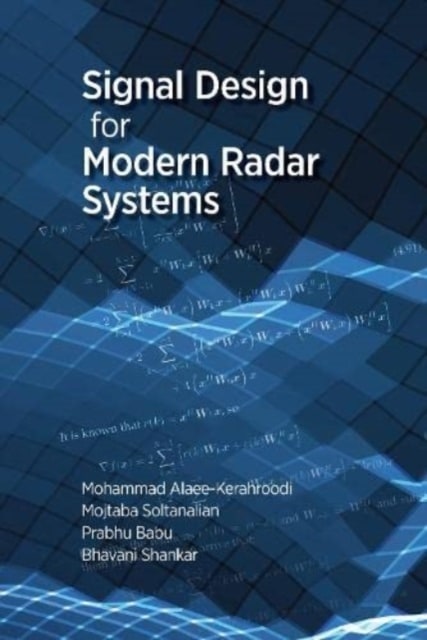Signal Design for Modern Radar Systems, 最新のレーダー システムの信号設計, 9781630818920, 978-1-63081-892-0,「次世代装備」
Description
This book provides a comprehensive overview of key optimization tools that can be used to design radar waveforms and adaptive signal processing strategies, assisting you in meeting the increased demands of sensing system proliferation. These methods include power-methodlike iterations, coordinate descent, majorization-minimization, block successive upper-bound minimization, and semidefinite programming. This book walks you through these optimization frameworks that achieve the desired design goal for waveform design as a solution to a constrained optimization problem, such as finite energy, unimodularity (or having constantmodulus), and finite or discrete-phase (potentially binary) alphabet, which are dictated by practical constraints of real systems. Focusing on a holistic approach rather than a problemspecific approach, the book shows what you need to formulate waveform design effectively and to understand the flexibility of the framework for adapting to your own specific needs.
By reading this book, you will have full access to the tools and knowledge required to design waveforms with optimized correlation/cross-correlation properties in different dimensions (e.g., time or space) for multiple radar configurations such as SISO/SIMO and MIMO radars, while considering spectral constraints for emerging topics such as cognitive radar, coexistence with communications, and mitigation of potential Doppler and quantization errors. It also includes sample software programs to assist you in generating the described solutions. This is a detailed handbook for industry researchers, scientists, and designers, including medical, marine, defense, and automotive companies, due to its unique style of covering mathematical results as well as their applications from various areas. With many exercise problems, the book is also an excellent resource for advanced courses on radar signal processing.
Contents:
Need for practical signal design
Convex and non-convex optimization
Power method-like iterations Majorization minimization (MM) methods
Coordinate descent (CD) and Block Successive Upper-Bound Minimization (BSUM) methods
Other optimization methods
Deep learning for radar
High Resolution and 4D imaging MIMO Radars for Automotive applications
Waveform design in Spectrum sharing applications
Indoor applications
Optimal transmit signal design for Space-Time Adaptive Processing (STAP) in MIMO radar systems
Cognitive radar, prototype, and implementation











